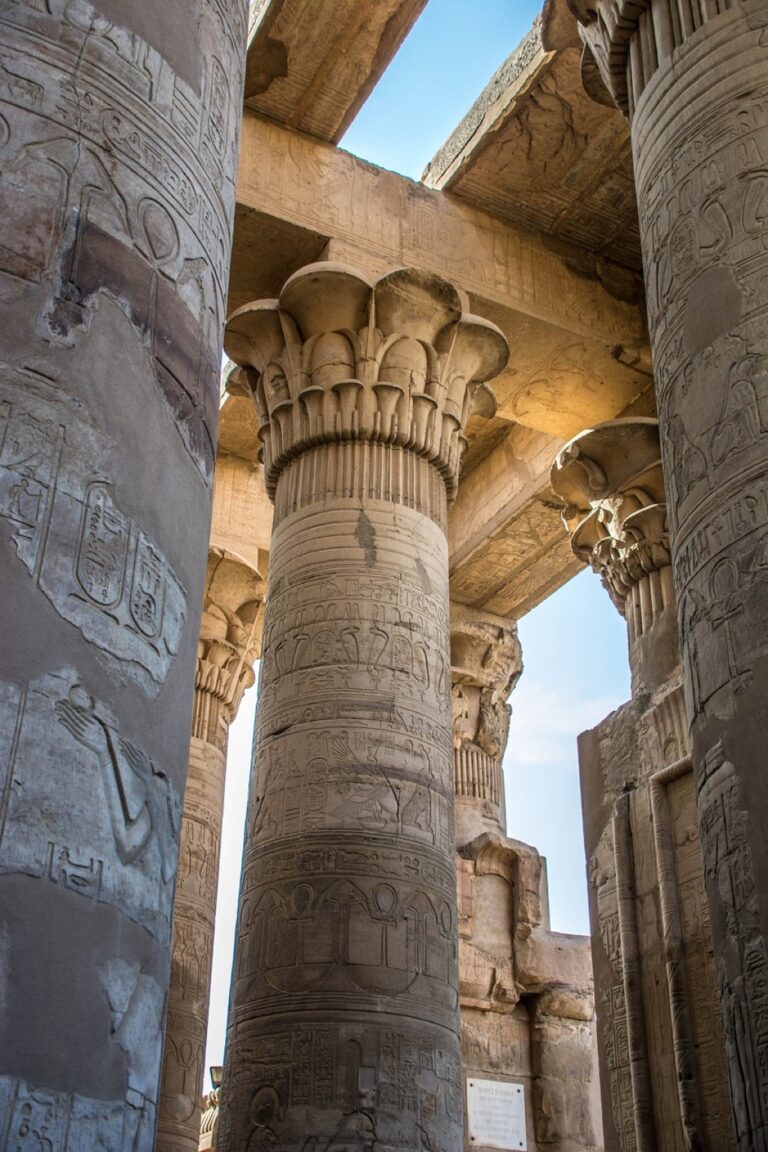7 Collaborative Cartographic Decision-Making Ideas That Transform Maps
Why it matters: You’re facing complex mapping decisions that require input from multiple stakeholders and your traditional top-down approach isn’t delivering the comprehensive solutions your community needs.
The big picture: Modern cartographic challenges demand collaborative frameworks that bring together diverse perspectives from urban planners to community members to data scientists.
What’s next: These seven proven strategies will transform how you approach map-making decisions and create more inclusive and effective geographic solutions for your projects.
Disclosure: As an Amazon Associate, this site earns from qualifying purchases. Thank you!
Establish Multi-Stakeholder Mapping Workshops
Multi-stakeholder mapping workshops transform complex geographic decision-making from isolated desk work into collaborative problem-solving sessions. You’ll create structured environments where diverse perspectives converge to address spatial challenges that affect entire communities.
Define Clear Objectives and Outcomes
Establish specific mapping goals before your first workshop session to ensure productive collaboration. Document what geographic problems you’re solving, what data you need to collect, and what final map products you’ll deliver. Create measurable outcomes like “identify 15 priority flood zones” or “map 3 alternative transportation corridors.” Share these objectives with all participants 48 hours before the workshop to allow proper preparation and focused discussion during your sessions.
Identify Key Community Representatives
Select participants who represent different geographic perspectives and data ownership within your mapping area. Include local government officials, neighborhood association leaders, business owners, environmental groups, and residents from various districts. Aim for 8-12 participants to maintain productive discussion while ensuring diverse viewpoints. Contact community organizations directly rather than relying on general invitations, and confirm each representative has decision-making authority within their organization to avoid implementation delays later.
Create Inclusive Participation Guidelines
Develop ground rules that ensure equal voice for all workshop participants regardless of technical mapping experience. Establish time limits for individual contributions, require plain language explanations of technical terms, and rotate speaking opportunities during map review sessions. Provide large-format printed maps and colored markers alongside digital tools to accommodate different comfort levels with technology. Document all suggestions in real-time using shared displays so participants can see their input being recorded and considered.
This 40-count set of Crayola Ultra Clean Washable Markers delivers vibrant color for all art projects. Easily washes from skin, clothing, and painted walls, making them perfect for kids ages 3 and up.
Implement Digital Collaborative Mapping Platforms
Digital platforms transform collaborative cartography by providing shared workspaces where multiple stakeholders can contribute simultaneously. These tools bridge the gap between technical expertise and community knowledge.
Choose User-Friendly Online Tools
Select platforms that prioritize intuitive interfaces over complex functionality. ArcGIS Online and QGIS Cloud offer drag-and-drop features that allow non-technical users to add points and polygons without extensive training. Mapbox Studio provides customizable templates, while Google My Maps delivers simple collaborative editing for basic projects. Choose tools that match your team’s technical comfort level rather than pursuing advanced features that create participation barriers.
Enable Real-Time Editing and Feedback
Configure platforms to support simultaneous editing by multiple users across different locations. Carto and ArcGIS Online offer real-time collaboration features that display live cursor movements and instant updates. Enable comment threads and annotation tools that allow stakeholders to provide contextual feedback directly on map elements. Set up automated notifications when changes occur, ensuring all collaborators stay informed about modifications. This immediate feedback loop accelerates decision-making and prevents conflicting edits.
Ensure Accessibility Across Devices
Optimize your collaborative platform for mobile devices, tablets, and desktop computers to accommodate diverse user preferences. Fulcrum and Survey123 excel at mobile data collection, while ArcGIS Online provides responsive design across all screen sizes. Test platform performance on various devices and internet speeds to identify potential barriers. Configure offline capabilities for field work where connectivity may be limited, ensuring data synchronization when users reconnect to the network.
Develop Community-Based Participatory Mapping
You’ll create more accurate and culturally relevant maps by engaging community members as active participants in data collection and decision-making processes. This approach transforms residents from passive recipients into knowledgeable contributors who understand local geographic nuances.
Engage Local Knowledge Holders
Identify community members who possess deep understanding of neighborhood history, land use patterns, and informal boundaries that official datasets often miss. You’ll find these knowledge holders among longtime residents, business owners, and community leaders who navigate daily spatial challenges.
Connect with local organizations like neighborhood associations, cultural centers, and faith-based groups to build trust and establish credible entry points. These partnerships ensure you’re accessing authentic community perspectives rather than relying solely on external observations.
Incorporate Traditional Mapping Methods
Combine paper-based sketching sessions with digital tools to accommodate participants with varying technology comfort levels. You’ll capture more detailed local insights when community members can draw familiar landmarks, walking paths, and gathering spaces using pencils and large-format base maps.
Document hand-drawn annotations through high-resolution scanning and integrate these analog contributions into your digital workflows. This hybrid approach preserves the spontaneous creativity of traditional mapping while maintaining compatibility with modern GIS platforms.
Validate Information Through Ground-Truthing
Organize field verification walks with community participants to confirm mapped features match actual conditions on the ground. You’ll identify discrepancies between satellite imagery, official records, and lived experiences that affect mapping accuracy.
Schedule multiple verification sessions across different times and seasons to capture temporal variations in land use, accessibility, and community activity patterns. This systematic approach ensures your participatory mapping reflects dynamic neighborhood realities rather than static snapshots.
Create Transparent Decision-Making Frameworks
Establishing transparent frameworks ensures all collaborative cartographic participants understand how decisions get made and why specific mapping choices receive approval.
Establish Clear Voting Mechanisms
Implement structured voting systems that give each stakeholder group appropriate weight in cartographic decisions. Use digital polling tools like Mentimeter or Slido during mapping sessions to capture real-time preferences on feature classifications, symbol choices, and data priorities. Weight votes based on expertise level and community impact, ensuring technical specialists and affected residents both influence final mapping outcomes through proportional representation systems.
Document All Input and Rationale
Record every suggestion and decision rationale throughout your collaborative mapping process using shared documentation platforms like Notion or Confluence. Create decision logs that capture who proposed each mapping element, supporting evidence provided, and reasoning behind acceptance or rejection. Include timestamps, stakeholder affiliations, and data sources referenced, making this documentation searchable and accessible to all participants for future reference and accountability.
Provide Regular Progress Updates
Share mapping progress through scheduled communications that keep all stakeholders informed about project developments and upcoming decision points. Send weekly email summaries highlighting completed mapping sections, pending choices requiring input, and timeline adjustments using project management tools like Trello or Asana. Include visual progress indicators showing percentage completion of different map layers and schedule upcoming collaborative sessions with clear agendas and expected outcomes.
Facilitate Cross-Sector Partnerships
Building effective cartographic solutions requires bridging institutional boundaries to leverage diverse expertise and resources.
Unite Government and Civic Organizations
Government agencies bring regulatory authority and comprehensive datasets while civic organizations contribute grassroots knowledge and community trust. You’ll achieve stronger mapping outcomes by connecting municipal planning departments with neighborhood associations early in your project timeline. Schedule joint stakeholder meetings where city GIS managers can share official boundary data while community groups provide insights about unofficial land use patterns. This partnership model works particularly well for zoning updates and infrastructure planning where regulatory compliance must align with resident needs.
Include Academic and Research Institutions
Universities and research centers offer specialized analytical capabilities and neutral perspectives that enhance mapping credibility. You can tap into graduate student research projects focusing on spatial analysis while accessing advanced GIS laboratories and computational resources. Partner with geography departments to conduct statistical validation of your community-gathered data using tools like R or Python spatial libraries. Academic institutions also provide long-term data storage solutions and can help establish standardized methodologies that ensure your collaborative maps meet peer-review standards.
Engage Private Sector Stakeholders
Businesses and development firms contribute market insights and technical resources that government and community groups often lack. You’ll find that private sector partners can provide high-resolution aerial imagery through drone surveys or satellite data subscriptions that enhance your base mapping layers. Connect with local surveying companies and environmental consulting firms who possess specialized equipment and professional licensing for boundary verification. Their involvement also ensures that collaborative mapping decisions consider economic feasibility and regulatory compliance requirements.
Design Iterative Review and Feedback Cycles
You’ll need systematic review processes to refine your collaborative mapping decisions through multiple validation rounds. This approach ensures map accuracy while maintaining stakeholder engagement throughout the project lifecycle.
Schedule Regular Community Check-Ins
Community check-ins create structured opportunities for stakeholders to evaluate mapping progress and suggest modifications. You should establish weekly or bi-weekly review sessions using video conferencing platforms like Zoom or Microsoft Teams. Set specific agendas focusing on recent map updates, data accuracy verification, and emerging community concerns. Document all feedback using collaborative tools such as Miro or Figma to track suggestions visually. Regular check-ins maintain momentum while allowing course corrections before issues compound.
Implement Structured Revision Processes
Structured revision processes establish clear protocols for incorporating stakeholder feedback into your mapping workflows. You’ll want to create standardized forms using Google Forms or Microsoft Forms to capture specific feedback categories like data accuracy, visual representation, and missing features. Assign revision priorities using a three-tier system: critical fixes requiring immediate attention, moderate improvements for next iteration, and future enhancements for long-term consideration. Use project management platforms like Asana or Trello to track revision status and assign responsibilities to team members.
Allow for Continuous Map Improvements
Continuous improvement frameworks enable your collaborative maps to evolve with changing community needs and updated data sources. You should implement version control systems using GitHub or similar platforms to track map iterations and maintain historical records. Create feedback loops through embedded survey tools within your digital maps, allowing users to report inaccuracies or suggest enhancements directly. Schedule quarterly comprehensive reviews to assess overall map performance, user engagement metrics, and alignment with original project objectives while planning future enhancement phases.
Build Capacity Through Training and Education
Building competent collaborative mapping teams requires structured learning programs that develop both technical abilities and interpersonal skills across all stakeholder groups.
Provide Technical Skills Development
Technical skills training bridges the gap between community knowledge and digital mapping capabilities. You’ll need to offer hands-on workshops covering basic GIS operations like data input, layer management, and coordinate systems using platforms such as QGIS or ArcGIS Online. Start with fundamental concepts like scale, projection, and attribute tables before advancing to spatial analysis tools. Schedule progressive sessions that allow participants to practice with real project data, focusing on tools they’ll actually use during collaborative mapping sessions. Document training materials in multiple formats—video tutorials, step-by-step guides, and quick reference cards—to accommodate different learning styles and technical comfort levels.
Offer Cultural Competency Training
Cultural competency training ensures respectful collaboration between diverse mapping stakeholders with varying backgrounds and perspectives. You should facilitate sessions that address communication styles, power dynamics, and cultural approaches to spatial knowledge sharing. Train technical experts to translate complex GIS concepts into accessible language while learning to value traditional ecological knowledge and community-based spatial understanding. Include modules on inclusive facilitation techniques, such as creating space for non-verbal input and accommodating different decision-making processes. Develop protocols for handling conflicting perspectives about land use, territorial boundaries, and resource management that respect cultural sensitivities while maintaining mapping accuracy and project objectives.
Create Ongoing Support Networks
Ongoing support networks maintain collaborative mapping momentum through peer learning and resource sharing beyond formal training periods. You can establish mentorship programs pairing experienced GIS users with community participants, creating structured check-ins for troubleshooting technical challenges and project development. Set up digital communication channels like Slack workspaces or discussion forums where participants share mapping discoveries, ask questions, and coordinate field data collection activities. Organize monthly “mapping cafes” or informal meetups where stakeholders demonstrate new techniques, showcase project progress, and discuss emerging collaborative challenges. Maintain resource libraries with updated tutorials, template files, and best practice documentation that participants can access independently throughout their mapping journey.
Conclusion
These seven collaborative approaches transform traditional cartography from isolated technical work into dynamic community-driven processes. When you implement multi-stakeholder workshops digital platforms and participatory mapping methods you’ll create maps that truly reflect the communities they serve.
Your success depends on building genuine partnerships across sectors while maintaining transparent decision-making frameworks. Remember that effective collaborative mapping isn’t just about gathering data—it’s about creating sustainable relationships that continue beyond individual projects.
The investment you make in training community members and establishing feedback cycles pays dividends through improved map accuracy and stronger stakeholder buy-in. Start with one or two strategies that align with your current resources and gradually expand your collaborative toolkit as your team gains experience.
Frequently Asked Questions
What is collaborative cartography and why is it important?
Collaborative cartography is a mapping approach that involves multiple stakeholders—including urban planners, community members, and data scientists—working together to create maps. This method addresses the limitations of traditional top-down mapping by incorporating diverse perspectives, resulting in more accurate, culturally relevant, and effective geographic solutions that better serve community needs.
How do multi-stakeholder mapping workshops work?
Multi-stakeholder mapping workshops transform geographic decision-making into collaborative problem-solving sessions. These workshops bring together diverse participants to share knowledge, define clear objectives, and work collectively on mapping challenges. Success requires identifying key community representatives, establishing inclusive participation guidelines, and ensuring all voices are heard regardless of technical expertise.
What digital tools are recommended for collaborative mapping?
User-friendly platforms like ArcGIS Online and QGIS Cloud are recommended for collaborative mapping. These tools should offer intuitive interfaces, real-time editing capabilities, and multi-device accessibility. The best platforms allow simultaneous contributions from multiple users, provide offline functionality for fieldwork, and bridge the gap between technical expertise and community knowledge.
What is community-based participatory mapping?
Community-based participatory mapping engages local residents as active participants in data collection and decision-making. This approach leverages local knowledge holders—longtime residents, business owners, and community leaders—who provide insights into neighborhood history and land use patterns often missing from official datasets. It combines traditional methods with digital documentation for comprehensive results.
How can decision-making transparency be maintained in collaborative mapping?
Transparency is maintained through clear decision-making frameworks that establish voting mechanisms, document all input and rationale, and provide regular progress updates. Digital polling tools capture real-time preferences, shared platforms ensure accountability, and project management tools communicate completed sections and upcoming decisions to keep all stakeholders informed throughout the process.
Why are cross-sector partnerships important in collaborative mapping?
Cross-sector partnerships unite government agencies, civic organizations, academic institutions, and private sector stakeholders to create comprehensive mapping solutions. Government provides regulatory authority and datasets, civic groups contribute grassroots knowledge, academia offers analytical capabilities, and private sector provides technical resources. This collaboration ensures maps consider regulatory compliance, community needs, and economic feasibility.
How do iterative review cycles improve collaborative mapping outcomes?
Iterative review cycles refine mapping decisions through multiple validation rounds, ensuring accuracy and sustained stakeholder engagement. Regular community check-ins evaluate progress, structured revision processes incorporate feedback effectively, and continuous improvements through version control systems allow maps to evolve with changing community needs while maintaining alignment with project objectives.







